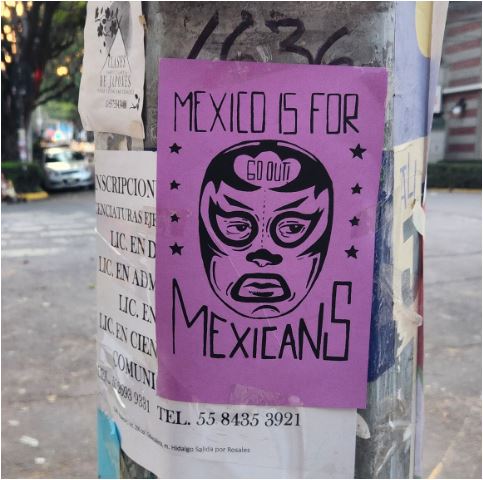The Mexican government needs to stop the displacement of Mexican residents by Americans moving to Mexico City.
Mexico City, with its rich history and vibrant culture, has long been a haven for locals who cherish its unique blend of tradition and modernity. However, the recent influx of Americans moving to the city has sparked a wave of gentrification that is reshaping entire neighborhoods and displacing long-term mexican residents. While some may view this as a sign of progress and globalization, it is, in reality, a cultural and social tragedy that needs immediate attention from the Mexican government.
Rising Costs
One of the most immediate and visible effects of gentrification is the rising cost of living. Wealthier individuals moving into previously lower-income neighborhoods drive up property values and rent prices. This surge in demand creates an economic environment where long-term, lower-income residents can no longer afford to live in their own homes. The very heart and soul of these communities are being pushed out to make way for more affluent newcomers.
Example:
Consider the once modest neighborhood of Condesa. Over the past few years, it has transformed into one of the trendiest areas in Mexico City. While this might seem like a positive development, the reality is that many long-term residents have been priced out of their homes. The quaint, affordable apartments that once housed generations of families are now luxury rentals catering to a wealthier crowd.
Loss of Community
Gentrification doesn’t just displace residents physically; it displaces them socially. The breakdown of long-standing social networks and community ties is a devastating consequence of this trend. Residents who have lived in these neighborhoods for generations find themselves separated from friends, family, and support systems. This loss of community can lead to feelings of isolation and alienation among those who are forced to move.
Example:
In neighborhoods like Roma Norte, long-time residents often speak of how they hardly recognize their own streets. The local corner stores and family-run businesses that once served as social hubs are now replaced by upscale boutiques and coffee shops that cater to tourists and new, wealthier residents. The social fabric that held these communities together is rapidly unraveling.
Cultural Erosion
Perhaps one of the most tragic aspects of gentrification is the erosion of cultural identity. Mexico City’s neighborhoods are known for their unique cultural characteristics and historical significance. Gentrification, however, often leads to the homogenization of these areas, stripping away their distinctive qualities.
Loss of Cultural Identity:
The infusion of new, often foreign, residents can lead to a dilution of local traditions and customs. Traditional festivals, local cuisines, and cultural practices can be overshadowed by more generic, global influences. This loss of cultural heritage and identity is a blow to the community’s soul, erasing the very essence of what makes these neighborhoods special.
Marginalization of Local Businesses:
Small, locally-owned businesses are the lifeblood of any community. They reflect the culture, values, and needs of the local population. However, gentrification pushes these businesses out by raising rents and introducing competition from larger, more generic companies.
How To Fix It?
The gentrification of Mexico City requires urgent intervention. The Mexican government must implement policies to protect long-term residents from being displaced, preserve the cultural heritage of neighborhoods, and support local businesses. Without such measures, the city risks losing its unique character and the very people who have shaped its identity.
By addressing these challenges head-on, we can ensure that Mexico City remains a vibrant, inclusive, and culturally rich place for generations to come. It’s time to take a stand against the forces of gentrification and preserve the soul of this remarkable city.

